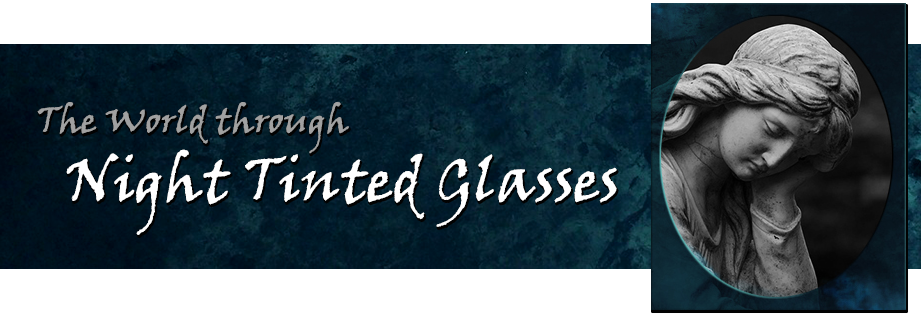
So who was Jack the Ripper? What can we logically infer, from the perspective of modern law enforcement techniques?
The brutal truth is -- people disagree. And I am not a criminologist. So take every single word that follows with a grain or two of salt. Maybe a pillar.
Generally, serial killers are divided into "organized" and "disorganized" categories. Given the fact that Jack escaped detection while murdering five women inside one of the most densely-populated parts of London, I would opt for the "organized" label. In essence this means he put some kind of forethought into his crimes.
As mentioned earlier, I believe what forensic evidence we can discern at this late date would indicate he strangled all or most of his victims before starting to cut them up. Patricia Cornwell made the argument that his weapon was almost certainly not a straight edge razor (as has sometimes been suggested) and I agree with her. On that. Some kind of very sharp dagger or
 long knife would make the most sense. Her candidate for the Ripper, however, makes little sense. Walter Sickert was a rather well-known artist of the day. He was also a weirdo. Cornwell maintains that several of his paintings echo the Ripper Murders -- which is true, and hardly surprising since Sickert was openly fascinated by the case. Experts, rightly in my opinion, dismiss her contention. One reason that makes me do so is the lack of any further victims, since the man lived until World War II! Imagine how many more people John Wayne Gacy would have slaughtered had he not been caught...!
long knife would make the most sense. Her candidate for the Ripper, however, makes little sense. Walter Sickert was a rather well-known artist of the day. He was also a weirdo. Cornwell maintains that several of his paintings echo the Ripper Murders -- which is true, and hardly surprising since Sickert was openly fascinated by the case. Experts, rightly in my opinion, dismiss her contention. One reason that makes me do so is the lack of any further victims, since the man lived until World War II! Imagine how many more people John Wayne Gacy would have slaughtered had he not been caught...!Some notes written by a Scotland Yard official years after the case have all too often been seized as some kind of "proof". In fact, those notes list a mysterious foreigner no one can identify (but fits neatly into Victorian prejudices of the time) and one Montague Druitt. He was a favorite Ripper candidate for years -- a failed barrister with rooms near Whitechapel, with doctors in his family and an insane mother. He killed himself about the time of the fifth murder as well. Problem -- we now know he was at a cricket match at a time that would make it almost certainly impossible to have committed one of the killings.
It does seem to me that while the Ripper murders were sexual in nature -- the attacks on wombs and ovaries and things are pretty strong indications of such -- the police at the time found no evidence of sexual intercourse or activity. They certainly knew what to look for. So one is tempted to assume Jack was in some sense impotent. That might help explain the rage shown in this crimes. Or -- it might indicate Jack was something considered rare in serial killers, a woman. "Jill The Ripper" was Conan Doyle's theory, and more than one person has pointed out that a local midwife would be expected to have blood on her clothes.
One pattern that does show up is that the crimes seemingly got more savage as time went by. Then, they stopped. Assuming (as I do) that the "canonical five" do represent the work of the same killer, one is left with a question of why the murders stopped? The modus operandi of Jack the Ripper vanished. Did the killer start to successfully hide his victims? While that is a tempting theory, it seems very different from the Ripper pattern. He did not lure victims to a secret place but used what was handy, and frankly was more than a little lucky. Rather it seems more likely Jack either left London or was prevented from continuing for some reason. He died, or was crippled or imprisoned. Probably.
 Then again, maybe he had satiated himself for the time being.
Then again, maybe he had satiated himself for the time being.Francis Tumblety was an American-born doctor (or sorts) and conman who has been suggested lately, but frankly this presents problems. For one thing, he lived until 1903. Where were his other victims? While he was in London during 1888, he traveled elsewhere and no such hideous crimes seem to have followed him. More, while he was willing to marry a woman (a prostitute as it turns out), he was pretty clearly homosexual. Unless he was what we today would call "bisexual" and his desires vis-a-vis women took this violent and bizarre shape. Still, one has to wonder why the murders stopped?
My conclusion? Jack the Ripper was a sexual murderer, either female or impotent, who was clever enough to plan things on the spur of the moment. He (or she) acted with forethought and an ever-more-expressed savagry. Then, after the murder of Mary Kelly, Jack (or Jill) suffered some kind of life change that precluded further such crimes. If this person later resumed a murderous career, they did so with a different modus operandi (possible, but somewhat unlikely).
Which is hardly more than we started with, now is it? And certainly not as exciting as gaseous alien predators or shadowy conspiracies.





























